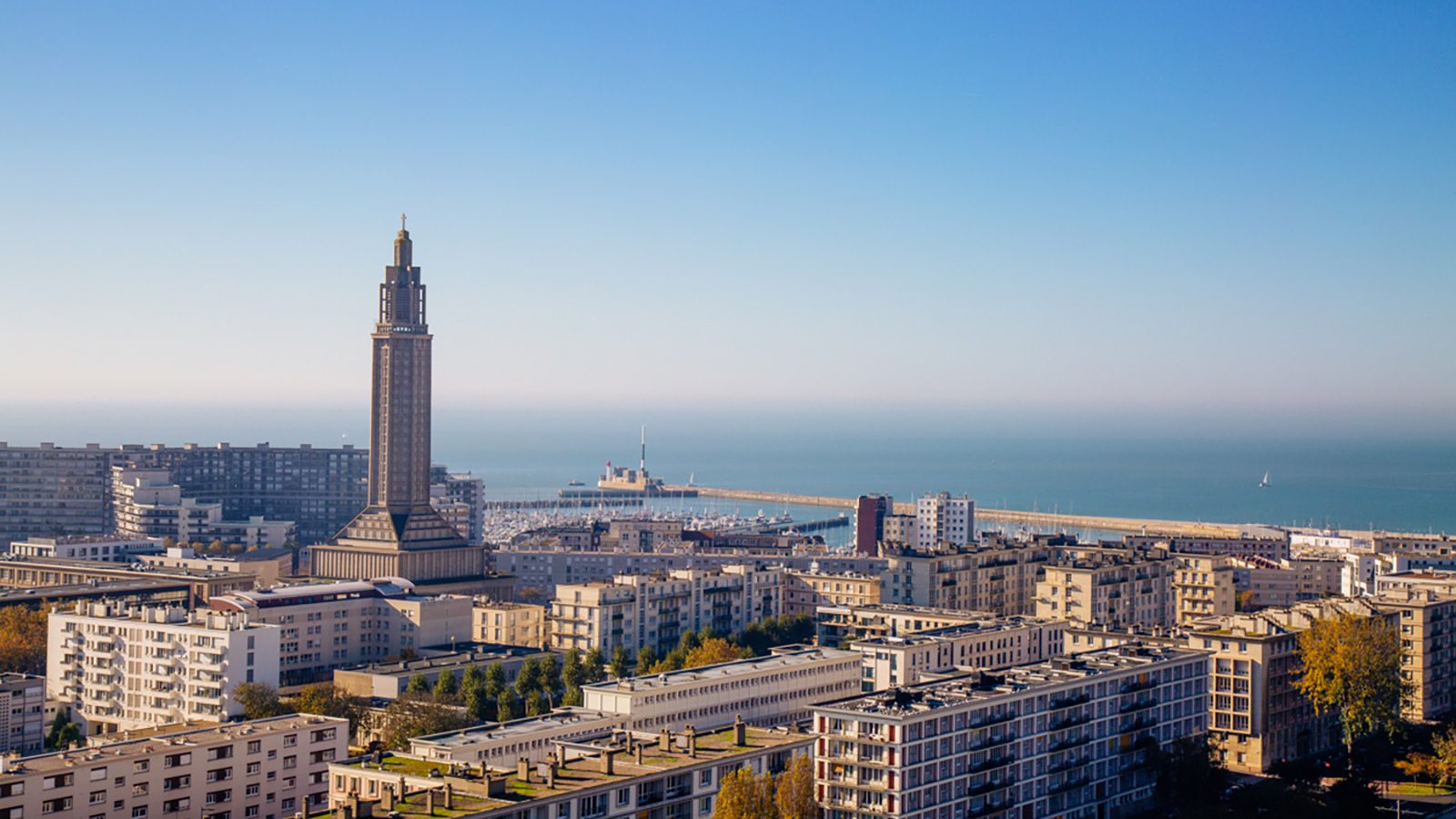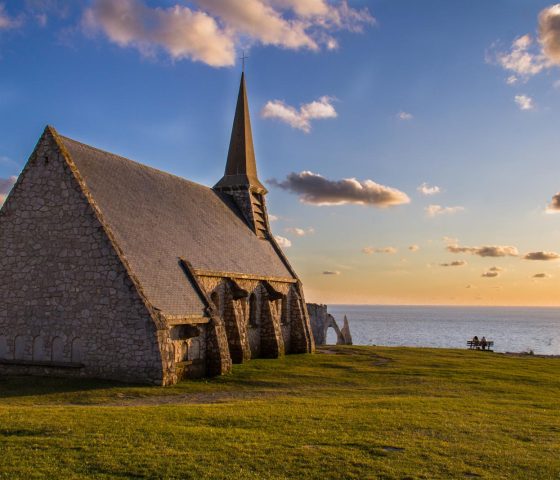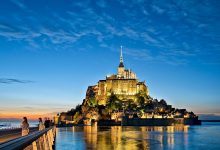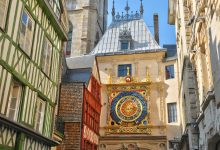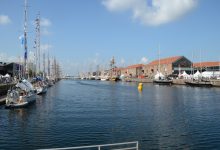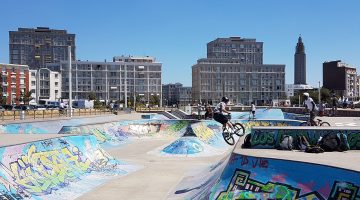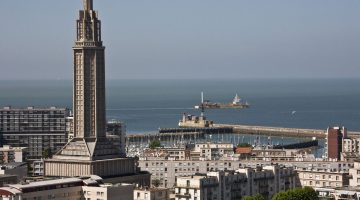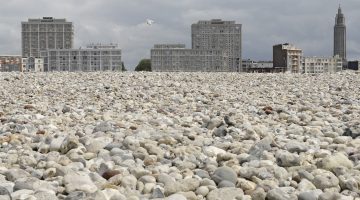Updated on 20 July 2023
Reading time: 3 minutes

Situated at the mouth of the River Seine, the port city of Le Havre was almost completely rebuilt after World War II. The unusual concrete architecture of Le Havre, designed by Auguste Perret, has resulted in the city centre becoming a UNESCO World Heritage Site in 2005. Highlights of Le Havre include the Perret show flat, impressive modern art museum and picturesque marina and beach. It is also an important cross-Channel ferry port and the largest container port in France.
AUGUSTE PERRET’S VISION
To this day, Le Havre offers a captivating mix of industrial and natural grandeur. There’s a remarkable feeling of space and light in this port city almost completely rebuilt after the terrible destruction wrought in World War II. Just a handful of historic buildings in the city centre survived the appalling devastation.
A modern architect with a big vision was placed in charge of the post-war reconstruction. Auguste Perret was one of the world’s pioneers in employing concrete. Not only was it cheap, he also reckoned he could achieve many new effects with it, as he proved. The overall design, though altered many times, turned out to be bold and grand. Perret’s modern transformation of Le Havre helped the place become the first modern city in France, and one of only two post-World War II cities to be recognised as a World Heritage Site by UNESCO.
A MODERN CITY with seaside vibes
Perret’s reconstructed city centre has been joined by a further few modern buildings, including the André Malraux Museum of Modern Art (MuMa) and Le Volcan arts centre, the latter designed by leading Brazilian architect Oscar Niemeyer. The most recent addition is the Bains des Docks, a state-of-the-art aquatic centre designed by award-winning architect firm Ateliers Jean Nouvel as part of an effort by Le Havre to revitalise its docklands.
Just west of the docks, Le Havre faces directly out onto the Channel. Here you’ll find a large marina and vast shingle beach, where colourful beach huts, bars and restaurants line the promenade as far as Sainte-Adresse. Le Havre’s elegant next-door neighbour is home to the Dufayel building, which housed the exiled Belgian government in World War I, and a 19th-century fort turned public gardens boasting magnificent views of Le Havre and its port.
BIRTHPLACE OF IMPRESSIONISM
In 1872, local artist Claude Monet painted the sun rising through the industrial chimneys of Le Havre, and named his painting ‘Impression, Sunrise’. An unimpressed art critic dismissively dubbed Monet’s style ‘Impressionism’. The term stuck and became the name of what is surely now the best-loved art movement in the world.
